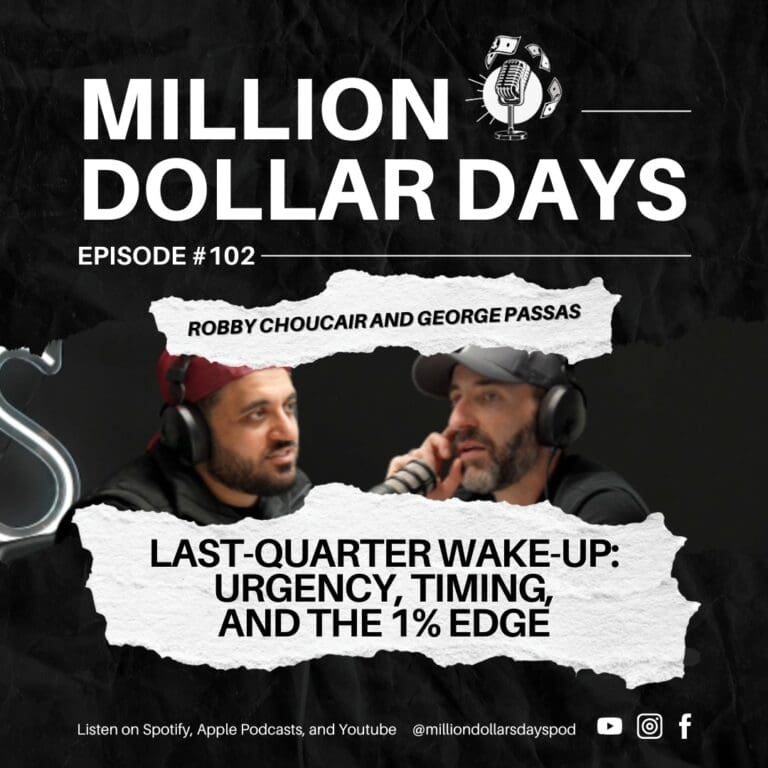The conversation opens with a symbol: a model super yacht on a desk—less a toy than a daily dare. It triggers a truth that stings: people blink, years pass, and they haven’t moved. That single object frames the episode’s relentless thread—urgency, compounding effort, and the uncomfortable gap between potential and progress. We talk about the compressed reality of Q4—December’s halved, January’s slow start—and how that leaves roughly sixty productive days to make decisive moves. The tone is frank: frustration with current velocity, fear of stagnation, and the tension between being “busy” versus truly productive. This isn’t about glamour goals; it’s about honest scorekeeping and a plan that respects the calendar. We set a pace that challenges comfort, pushing listeners to choose the one meaningful shift that will still matter in March.
We weigh timing versus skill through a Bezos prism. Amazon’s third-year sales, aggressive month-over-month growth—it’s a humbling benchmark. The takeaway isn’t to mimic a different era but to interrogate our constraints. Could a known operator rebuild a $20M firm today without their name? Maybe not—timing and category maturity are real. But using timing as a pillow is dangerous. The alternative is to use it as a filter for where leverage exists now: AI workflows, media systems, and mechanisms that multiply output without multiplying hours. We wrestle with the question of “the ceiling”—those invisible thresholds from $1M to $5M to $10M to $30M—and whether we’re dragging the same assumptions through larger goals. The thesis: constraints move, but they don’t remove themselves. We must attack them with strategy, not just stamina.
In construction, the calendar adds unique pressure: clients want milestones before Christmas, teams push to clear deliverables, and owners chase cash events. Yet we argue for dual focus—close out the year and seed the next one. That means pricing now for next-year starts, calling the power base, running ads before you’re in famine, and viewing margin as secondary to absolute dollars where risk is managed. A million at 10% beats $400k at 20%; sophisticated owners measure money velocity, not only ratios. The mindset shift here is practical and uncomfortable: take the bigger problem if it yields the bigger outcome, provided you can de-risk the execution. That shift changes pipeline strategy, pricing discipline, and how you allocate your team’s highest-leverage hours.
Leadership becomes a central lever. One host admits he spent three quarters on the field instead of coaching from the box. The correction is clear: promote performers, apply pressure with support, and train for thinking patterns, not just tasks. Teaching “above the line” responsibility became a shared language—short-hand that changes behavior in the moment. Quarterly team reviews, consistent training, and clear KPIs are less about compliance and more about increasing the team’s decision density. When a supervisor starts noticing human dynamics—not just technical defects—you know you’re building leaders, not dependents. That creates compounding capability: problems become routine, emotions stabilize, and fixes get faster and cheaper.
We debate grind versus leverage. Hard work is necessary but insufficient; if effort alone won, laborers would be the wealthiest. The advantage is “always-on” in spirit—less about never stopping and more about removing luck from the process. Test more, measure more, refine faster. We share how event marketing changed once we iterated everything—names, content, sale tactics, ad flows, confirmations. Some tests cut attendance; that data still moved us forward. The point isn’t heroics; it’s volume and learning speed. Content follows the same rule: higher output across platforms increases the surface area for discovery, even when early engagement underwhelms. The compound effect is slow, then sudden.
We also anchor on energy and routine. Early office deep work, inbox walls, Slack off, gym at noon, ice baths—practices that create long runways of focus. These aren’t talismans; they are ways to build consistent output. But we’re brutally honest that routine alone won’t buy the yacht. The point is using routine to manufacture hours that compound into assets: systems, offers, campaigns, and trained people. That becomes the engine for more ambitious bets: shifting free products to paid, introducing live elements to spike conversion, or packaging IP into media with recurring revenue. It’s not one lever; it’s a stack, built intentionally.
